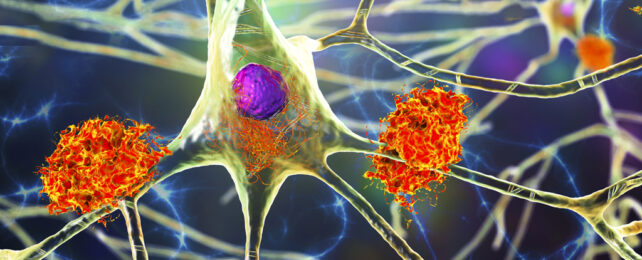Researchers have sussed out the biological workings of immune cell mutations previously associated with Alzheimer's disease. One of the mutations appears to play a protective role in the brain.
With tens of millions of people living with dementia worldwide and limited means of treatment, decades of time and billions of dollars have been invested in studying the disease. Yet it still remains stubbornly mysterious.
So Stanford University neuroscientist Andy Tsai and colleagues tested different variations of the phospholipase C-gamma-2 (PLCG2) gene in mice to confirm and track down the mechanism behind its previously identified association with Alzheimer's.
This gene is known to be expressed in the brain's microglia immune cells. These cells identify and devour invaders or other cells that have gone wrong in our brains.
PLCG2 is involved in signaling between microglia and inducing an inflammatory response, and it is triggered when microglia encounter amyloid brain plaques, a common characteristic of Alzheimer's.
"The microglial response affects neurons which then affects the capacity to learn and form new memories," explains Indiana University biochemist Gary Landreth.
When Tsai and team knocked out the gene entirely, the mice became more likely to develop Alzheimer's.
Microglia with mutations of PLCG2 appear to respond differently to the amyloid plaques, the researchers observed. They change the immune cell's ability to alter and compact the plaques.
One variation, M28L, acted just like the knock-out did – leaving the microglia incapable of correctly performing their task.
"They cannot efficiently mobilize a robust response to the deposited amyloid," the team writes in their paper.
But another version of the gene, P522R, was able to sustain working memory of mice impaired with a model of Alzheimer's disease with increased activity of the PLCG2 protein.
Tsai and colleagues suspect that by allowing the microglia to reduce plaques more effectively, the mutation helps clear the way for neurotransmitters to reach their targets in mousebrains with Alzheimer's-like features.
This theory requires more testing to be confirmed, and while the protective mutation has been seen in humans, there is no data beyond a genetic association between M28L and Alzheimer's in humans as this mutation seems to be rare. But the new study aligns with recent suggestions that Alzheimer's is an immune disease and the amyloid plaques themselves are not what's malfunctioning.
Overall the results indicate "that promoting a neuroprotective microglial response to amyloid pathology could limit Alheimer's disease progression," Tsai and team conclude.
This research was published in Immunity.
